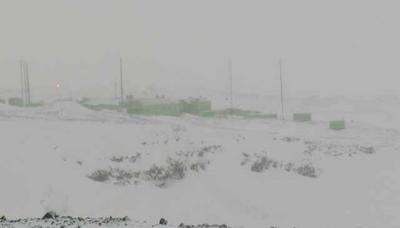
|
23 September, 2003Measuring the size of the Earth Today marks the first day of fall in the Northern Hemisphere. It is our first day of spring in the Southern Hemisphere. And it is very spring like! The snow is falling and the temperature is a balmy 9 degrees F. It is time to take the skis out because now the snow is quite soft, and easy to glide in. Great puffy snow drifts are everywhere. On this day, the sun will rise due east and set due west. Some of you may notice this when driving home as many cities have streets oriented this way and you find it difficult to stare directly into the setting or rising sun. At the equator, when the sun is highest in the sky it will be directly above you and you will have absolutely no shadow. For others not on the equator, their shadow will be shortest when the sun is highest in the sky. Depending where they are on Earth, their shadow will be become longer the more they move away from the equator. My shadow is very long down here, I am 77 degrees south of the equator. My home town in Oregon is 45 degrees north. We have a town there called Halfway; it is located halfway between the equator and the North Pole. The first person to recognize that shadow lengths were different depending on where you stand on Earth was Eratosthenes over 2000 years ago. He used that fact to figure out the distance around the Earth, called its circumference. You can read about that here at this website www.youth.net/eratosthenes/welcome.html. Many classrooms will use this site to determine the circumference of the earth using data gathered from around the world. There are a few classrooms in Oregon that are going to parcticipate in this Solar Noon project; they will try to figure out the diameter of the Earth using the shadow length of a meter stick. I will post a picture of the shadow just as soon as it stops snowing. Today our group had dinner over at Scott Base, the Kiwi (New Zealand) station. We have an early morning launch tomorrow. It is possible that we will launch the large instrument with Jason's thermometer on it. It is an expensive instrument which we have to recover, but the winds look light so it will not drift out to sea. We have a major problem in that all the batteries have been stored here for one year at room temperature and they are unable to maintain power to the instrument. I am hoping the batteries will hold through the flight.
Contact the TEA in the field at . If you cannot connect through your browser, copy the TEA's e-mail address in the "To:" line of your favorite e-mail package. |







